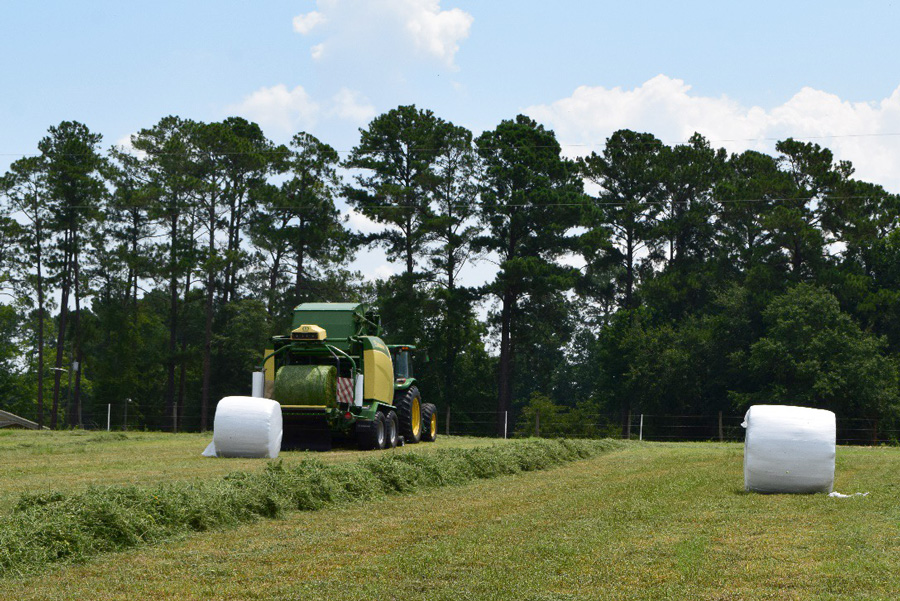-
 Many produce farms choose to exclude domesticated animals to prevent the spread of fecal contamination to produce crops. However, when farms allow members of the general public access to U-pick fields, on-farm restaurants, or roadside markets, the Americans for Disabilities Act (ADA) protects the rights of individuals who may require…
Many produce farms choose to exclude domesticated animals to prevent the spread of fecal contamination to produce crops. However, when farms allow members of the general public access to U-pick fields, on-farm restaurants, or roadside markets, the Americans for Disabilities Act (ADA) protects the rights of individuals who may require…|
-
 This publication gives both consumers and small vegetable farm growers options for providing support to their tomatoes in the vegetable garden. The circular covers the basics of how to successfully use different systems of staking to support tomatoes, how to prune and manage tomato plants for a healthier crop, and…
This publication gives both consumers and small vegetable farm growers options for providing support to their tomatoes in the vegetable garden. The circular covers the basics of how to successfully use different systems of staking to support tomatoes, how to prune and manage tomato plants for a healthier crop, and…|
-
 The southern chinch bug, Blissus insularis Barber, is a serious insect pest of turfgrass, especially St. Augustinegrass, in Georgia. Bermudagrass, centipedegrass, and zoysiagrass are also attacked by southern chinch bug. They feed on grass using their piercing and sucking mouthparts. Affected turfgrass can form yellow to brown patches that are…
The southern chinch bug, Blissus insularis Barber, is a serious insect pest of turfgrass, especially St. Augustinegrass, in Georgia. Bermudagrass, centipedegrass, and zoysiagrass are also attacked by southern chinch bug. They feed on grass using their piercing and sucking mouthparts. Affected turfgrass can form yellow to brown patches that are…|
-
 Georgia pecan orchards are often found growing adjacent to fields of annual row crops, timber, and pastures. As a result, the tree canopies of these orchards are susceptible to injury from herbicide drift from the adjacent operations when herbicide applications are made under conditions unsuitable for spraying. Drift may also…
Georgia pecan orchards are often found growing adjacent to fields of annual row crops, timber, and pastures. As a result, the tree canopies of these orchards are susceptible to injury from herbicide drift from the adjacent operations when herbicide applications are made under conditions unsuitable for spraying. Drift may also…|
-
 Genomic testing is not a new idea in the eyes of science, but its application in today’s beef industry is still met with some confusion. The purpose of this publication is to explain to county agents and producers how genomic testing works, how to use the results, and why this…
Genomic testing is not a new idea in the eyes of science, but its application in today’s beef industry is still met with some confusion. The purpose of this publication is to explain to county agents and producers how genomic testing works, how to use the results, and why this…|
-

Baled silage, or “baleage,” is an excellent method for forage harvest, storage, and feed efficiency. Conserving forage as baleage enables harvests to be performed on a timely basis, allowing harvests to capture higher quality forage. This publication focuses on common questions about making and feeding baleage.
|
-
 This research report presents the results of the 2017 statewide performance tests of soybean, sorghum grain and silage, and summer annual forages. The tests for various evaluations were conducted at several or all of the following locations: Tifton, Plains, and Midville in the Coastal Plain region; Griffin and Athens in…
This research report presents the results of the 2017 statewide performance tests of soybean, sorghum grain and silage, and summer annual forages. The tests for various evaluations were conducted at several or all of the following locations: Tifton, Plains, and Midville in the Coastal Plain region; Griffin and Athens in…|
-
 This research report presents the results of the 2018 statewide performance tests of soybean, sorghum grain and silage, and summer annual forages. The tests for various evaluations were conducted at several or all of the following locations: Tifton, Plains, and Midville in the Coastal Plain region; Griffin and Athens in…
This research report presents the results of the 2018 statewide performance tests of soybean, sorghum grain and silage, and summer annual forages. The tests for various evaluations were conducted at several or all of the following locations: Tifton, Plains, and Midville in the Coastal Plain region; Griffin and Athens in…|